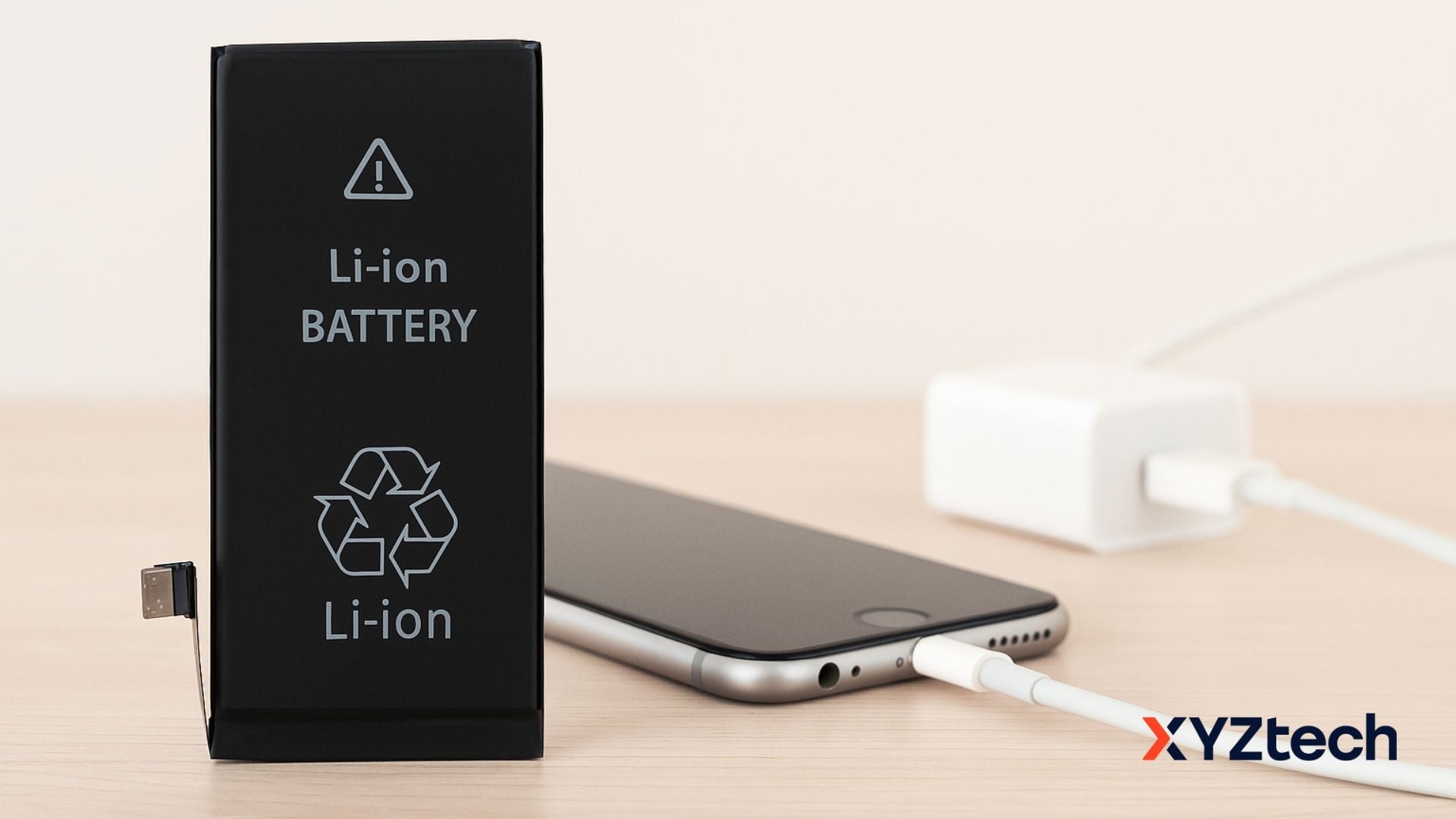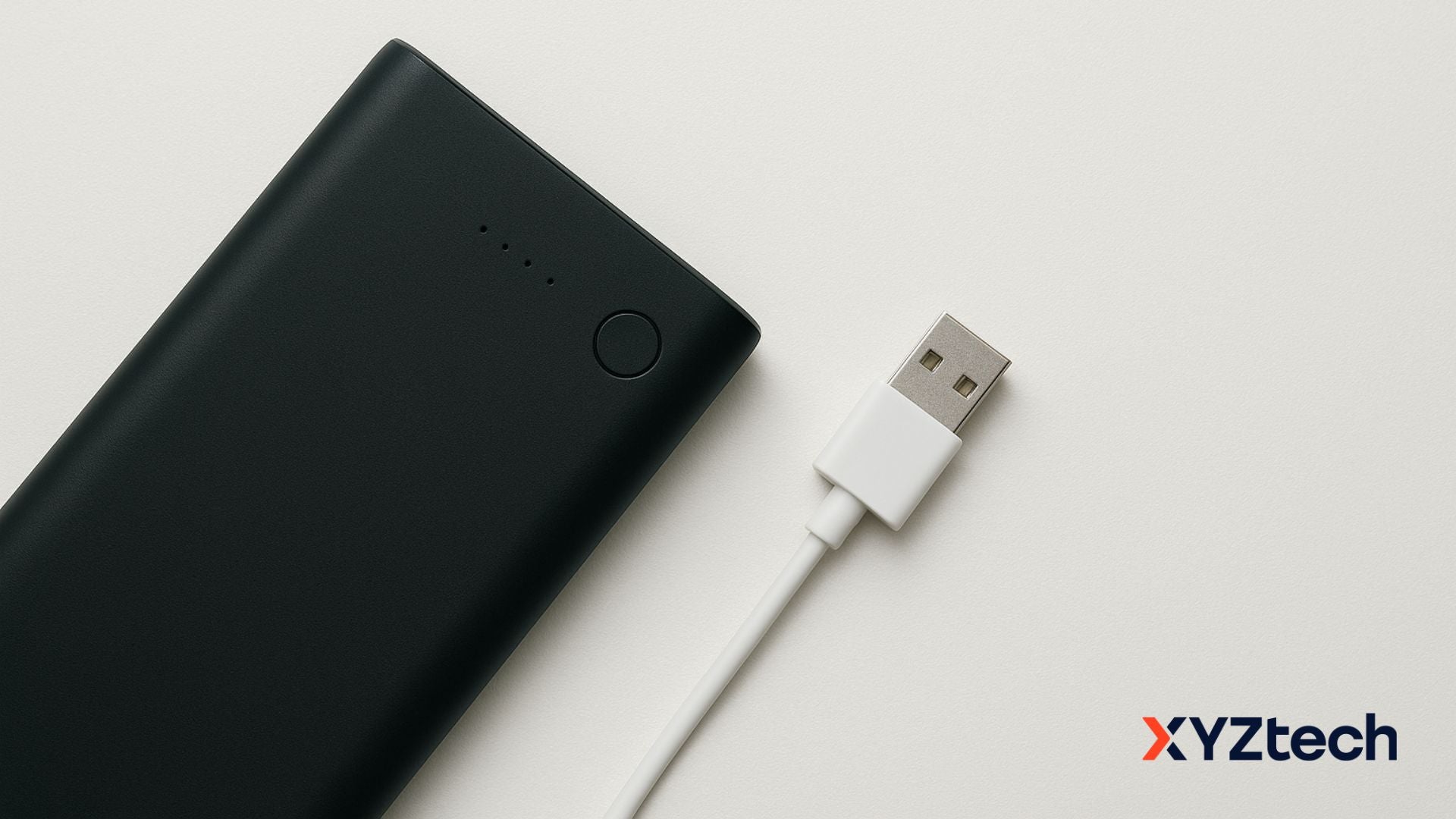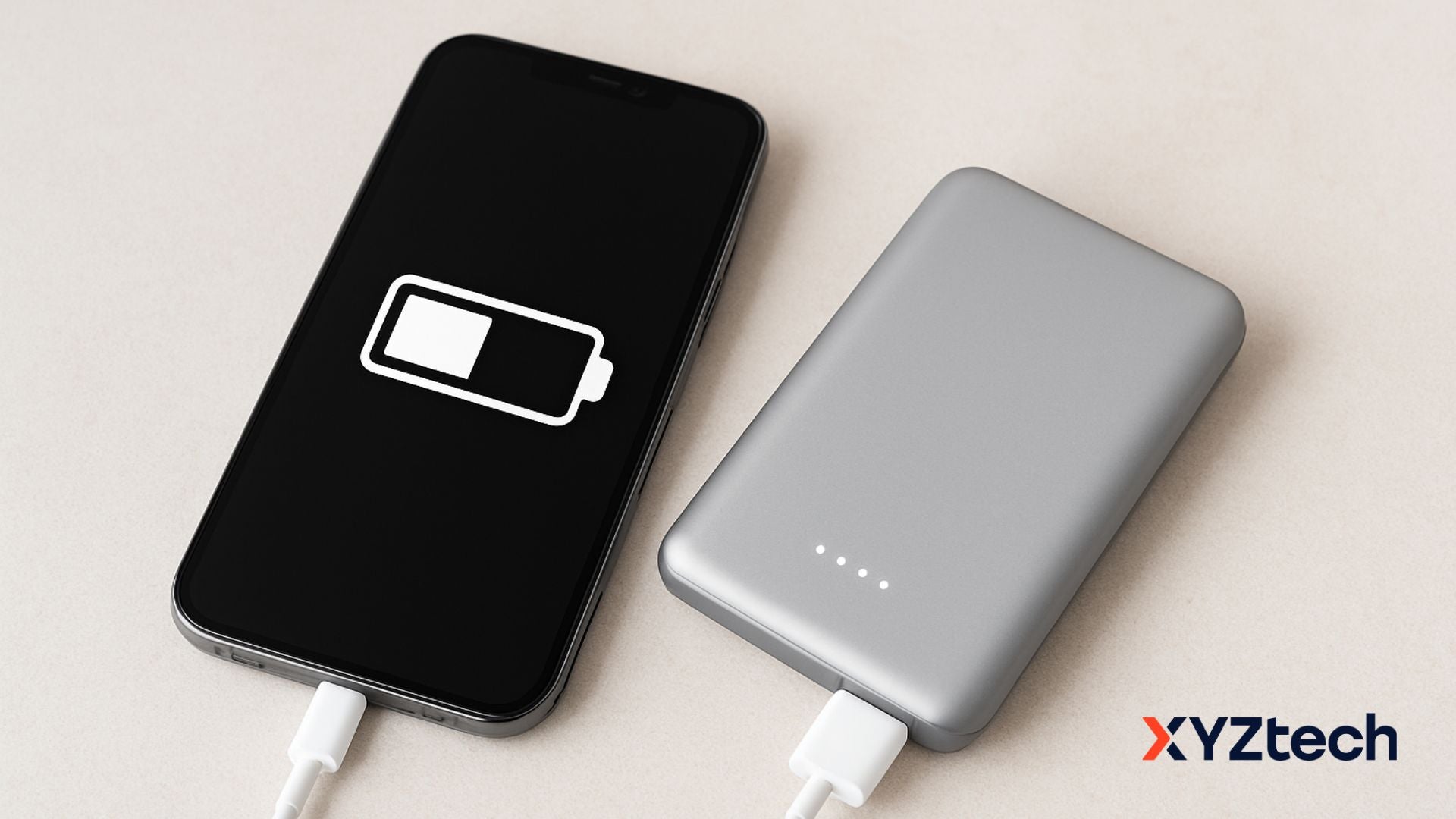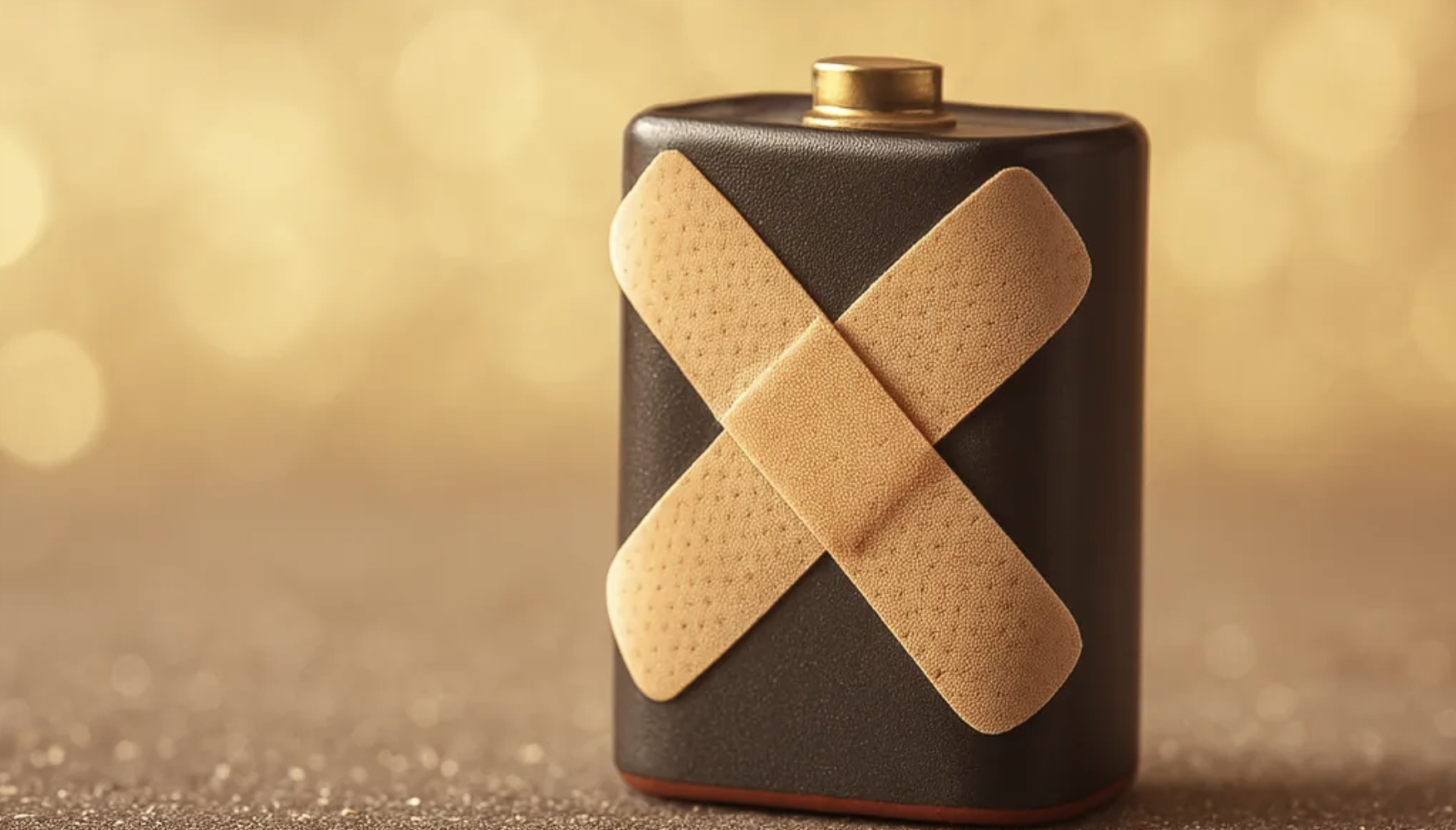Battery Memory Effect: Should You Let Your Battery Drain First?

You might not have even known the term battery memory effect existed until now, but chances are, you’ve followed advice shaped by it. Like being told to drain your phone before charging, or that topping off your battery too often will ruin it. These tips stuck around from the old nickel-cadmium days, even though modern devices use lithium-ion batteries now.
So why do people still ask about it?
- Maybe you’ve heard advice like you should always charge your phone to 100%, or let the battery drain completely once in a while, but you don’t really know why.
- Maybe your phone’s battery seems to drain faster lately, and you’re wondering if your charging habits are to blame.
- Or maybe you just want your battery to last as long as possible, and you're trying to figure out the best way to treat it.
All of that curiosity leads people (tech-savvy or not) to the same question: Does the battery memory effect still matter today? That’s what we will be discussing in this guide.
In this blog:
- What Is the Battery Memory Effect?
- Does the Battery Memory Effect Still Exist Today?
- Why is the 20% to 80% Range Still Recommended?
- How Different Battery Types Handle Memory Effect
- What Actually Wears Out Lithium-Ion Batteries
- Should You Still Drain Batteries Before Charging?
- Battery Memory Effect Misconceptions
- Frequently Asked Questions
Let’s get started!
What Is the Battery Memory Effect?
The battery memory effect is an old issue mainly found in nickel-cadmium (NiCd) batteries. Back in the day, if you kept charging them before they were fully drained, they would “lock in” to that smaller charge range. Eventually, the battery would act like it could only hold that amount of energy, even if it had more to give.
A simple way to picture it: imagine using just the top layer of your dresser drawer every day. After a while, you forget there’s space underneath, and so does the battery.
The fix back then? Fully drain the battery now and then to get that space back. But for today’s batteries, especially lithium-ion, that approach does more harm than good.
Does the Battery Memory Effect Still Exist Today?
Not really, at least not in the same way.
Most phones, laptops, and gadgets today use lithium-ion batteries, which are not affected by the classic battery memory effect. You can plug them in, whether they’re at 80%, 50%, or 30%, it won’t mess with their long-term capacity.
But here’s the confusing part: we’re still told to charge only between 20% and 80%. If Li-ion battery memory effect isn’t an issue, why the limit?
Let’s dig into that.
Why is the 20% to 80% Range Still Recommended?
This is where a lot of people get mixed up. That charging range isn’t about memory effect; it’s about reducing battery stress and making it last longer.
Here’s what really happens:
- Charging all the way to 100% regularly can heat up the battery and slowly wear it down.
- Letting the battery drop all the way to 0% too often can also speed up aging.
So when you hear someone recommend partial charging, it’s not because of a battery memory effect. It’s to slow down wear and tear. The idea of Li-ion battery memory effect just doesn’t apply here.
How Different Battery Types Handle Memory Effect
Not all batteries behave the same way when it comes to memory effect. Some older types were more sensitive to charging patterns, while newer ones, especially lithium-based, are built to be more flexible. Here's how each battery chemistry compares:
Nickel-Cadmium (NiCd)
- Had a strong memory effect
- Needed regular full discharges
- Now mostly phased out due to safety and performance issues
Nickel-Metal Hydride (NiMH)
- Less affected by memory
- Can still get sluggish over time
- Still used in AA/AAA rechargeable batteries
Lithium-Ion (Li-ion)
- Not affected by the traditional battery memory effect
- Designed to handle partial charges just fine
- Safer and smarter than older battery types
Lithium Iron Phosphate (LiFePO4)
- A lithium variant found in EVs and tools
- One study showed a mild, short-lived memory-like behavior
- The effect disappeared on its own after resting and recharging
What Actually Wears Out Lithium-Ion Batteries
The Li-ion battery memory effect issue might not exist, but lithium batteries can still wear out if you’re not careful. Here’s what shortens their life:
- Always charging to 100% and leaving them plugged in
- Constantly draining the battery to 0%
- Using the device while it’s overheating or in hot environments
Most newer devices have built-in protections. Your laptop might cap charging at 80% by default. Some smartphones delay full charging until just before you wake up. These smart systems are designed to keep batteries healthy without you having to think about it.
Should You Still Drain Batteries Before Charging?
Nope. Not with lithium-ion.
Draining your battery all the way down before charging it again might’ve helped in the NiCd era, but it can actually shorten the lifespan of modern lithium batteries. So go ahead and top off whenever you need—it’s totally safe.
Do You Still Need to Drain a Brand-New Battery Before the First Charge?
This one comes up a lot, too. And the short answer? No, you don’t have to.
That advice goes way back to nickel-cadmium days, when draining helped “reset” the battery’s memory. But lithium-ion batteries don’t work that way.
Today’s devices already come pre-calibrated and ready to go. You can unbox your phone or laptop, charge it right away, or use it down to whatever level, and then charge it. There's no need to wait or drain it to zero first.
If anything, letting your battery hit 0% out of the box, or at any point, puts stress on the battery and could affect longevity. S,o skip the full drain and just charge when it makes sense for your routine.
What About the “Discharge Once a Month” Tip?
You might’ve seen advice saying to let your battery fully drain once a month. That’s not about battery memory effect, it’s more for recalibrating your device’s battery meter.
Over time, your device might get a little “off” when showing how much charge is left. A full discharge and recharge every now and then helps it read more accurately. It’s not something you need to do regularly, just occasionally if your battery percentage seems way off. And again, it’s about your phone knowing how much charge is left, not about training the battery itself.
Battery Memory Effect Misconceptions
Now, let’s clear up some battery memory effect misconceptions. Here’s what’s fact and what’s outdated:
✅ Yes: NiCd batteries used to need full discharges to reset capacity.
❌ No: Lithium-ion batteries don’t need that kind of treatment.
✅ Yes: Sticking to 20%–80% can slow aging, but not because of memory.
❌ No: Your phone won’t “forget” its full charge just because you topped up early.
Frequently Asked Questions
What is the “no battery” memory effect?
The "no memory effect" means lithium-ion batteries don't lose capacity from repeated partial charges. Unlike older nickel-based batteries, Li-ion cells don't need to be fully discharged or fully charged. They handle flexible charging without locking into reduced capacity patterns.
Do LiPo batteries have memory effects?
No, lithium polymer (LiPo) batteries, like other lithium-based batteries, aren’t affected by memory effect. They can be charged after partial use without reducing future capacity, making them ideal for RC devices and drones.
Is it bad to fully discharge a lithium-ion battery?
Fully draining a lithium-ion battery isn't recommended. While it's safe once in a while, storing or letting the battery stay at 0% for too long can damage the cells permanently. It’s better to keep the charge between 20% and 80% for long-term health.
Wrapping It Up: Battery Memory Effect vs. Li Ion Battery Memory
The battery memory effect was a real limitation in older rechargeable batteries, especially NiCd. But lithium-ion batteries changed the game. You can plug in whenever it's convenient, without worrying about capacity loss caused by partial charges.
That being said, there are still smart ways to treat your battery well. The goal now is less about avoiding memory issues and more about keeping it from aging too fast. Charging between 20% and 80% is simply a way to help it last longer, not a requirement.
So don’t stress about draining to zero or waiting to hit 100%. Just charge when you need to, avoid extreme heat, and let your device's battery management do the rest.
Related Articles
Lithium Battery Types: Performance Insights and Comparisons
Li-Po and Li-Ion Battery Differences: What You Need to Know
How to Keep A Phone Battery Healthy: Top 10 Battery Care Tips




